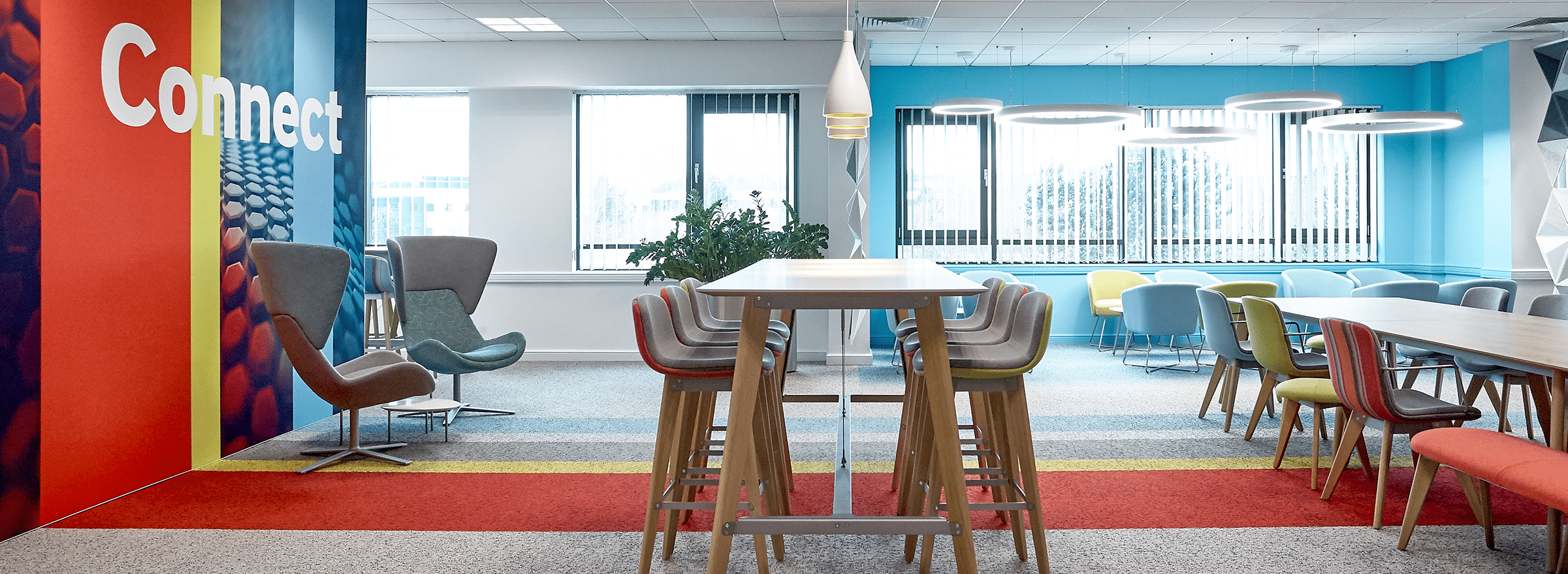How better design can help encourage people back to the office.
According to a recent BBC article, many of us spend most of our working lives in offices which are typically, and I quote, “horrible”.
With the advent of coronavirus, workplaces that were once bustling interactive hubs have become abandoned spaces where one can imagine tumbleweeds skittering across corridors. If the interviewee in the aforementioned article is right, and most offices are considered to be pretty horrible, then there’s no wonder people seem reluctant to return.
Plus, at home they can control their physical contact with other people, they don’t have to jostle for a meeting room, the décor is probably much, much nicer, they don’t have constant interruptions (unless their kids are at home) and they can make a quick cuppa without having to make a round the size of the plantation their tea came from. I could go on.

Make it easier and more enjoyable to work – at work
By now it seems likely that most offices will have the appropriate COVID-19 advice and directives in place. However, whilst unquestionably a priority, it’s not just about the need for people to feel safe that will encourage them to return. This stuff isn’t necessarily going to make everyone feel comfortable, focused or indeed happy to be there. If they also actually like their work environment and have a sense of belonging, that goes a very long way. We’re human beings after all and, as shallow as it sounds, aesthetics do matter, as do the right internal messages as any good Internal Comms Manager will tell you.
For many, peace and quiet and the ability to focus on something without incessant interruption is another boon of homeworking, and there’s a lot to be said about the increased level of efficiency this brings about.
If you haven’t seen the TED Talk by Jason Fried called ‘Why work doesn’t happen at work’, then it’s worth a watch. It may be almost ten years old at the time of writing this blog, but the irony that business owners create office environments that are not conducive for efficient working still strikes a chord. As Jason points out, when asked “where do you go when you really need to get something done?”, most office workers answer: “home” or “a meeting room”. Basically somewhere other than their desk – the place they are expected to be most efficient.
Why work doesn’t happen at work, a TED Talk by Jason Fried
So, the place that was designed for work doesn’t always, well…work. Many spaces weren’t being used effectively before coronavirus, as one of our previous blogs alludes to, and that’s even more likely to be the case post-COVID. If such adaptations become permanent, then there’s rationale to consider more than just safety in the longer term. Can the work space be designed to also maximise employee engagement and job satisfaction?
Who doesn’t want their employees to actually like going to work?
Having an ‘office makeover’ may seem frivolous to some, especially at a time like this. However, if getting millions of people back into the workplace is going to help get the economy moving and bring about a much greater sense of normality, then it makes sense to do everything you can to encourage your team to come back and be happy about it.
Due to coronavirus some employees might have been away from the office for a considerable amount of time and may therefore find it hard to slot back into office culture. It’s going to be yet another change they’ll have to adjust to, so why not make it a more appealing one by improving their work environment, even if it is just in terms of aesthetic titivation or better still – transformation.
Combine this with enhanced wellbeing, inspirational messaging, the right tools and effective work and break spaces, and it can lead to a very, very positive perception of a workplace. The conclusion? Better interior design is directly linked to greater productivity and a happier, prouder, more loyal workforce. One that is far more likely to return to their, not “horrible”, but rather amazing office environment.
Example case studies
If you need creative input in making your office a more effective and desirable place to work, please get in touch with us.